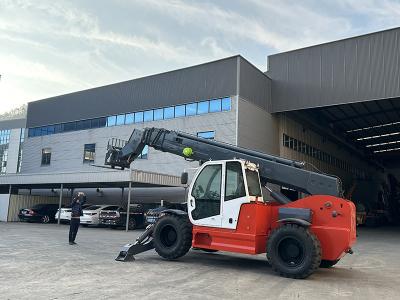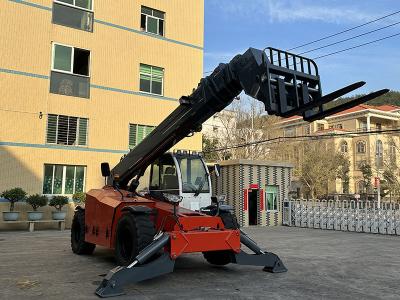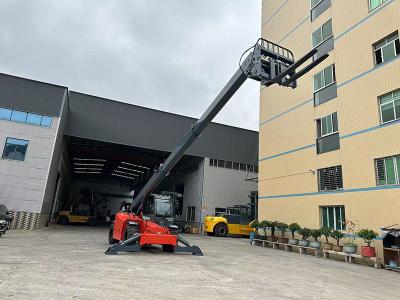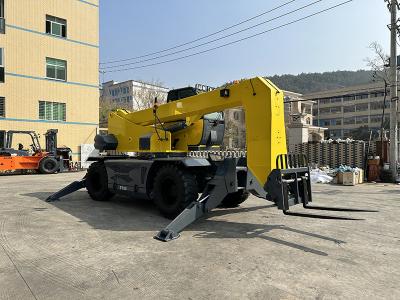1. The generator does not generate electricity.
Fault phenomenon: When the engine is running above medium speed, the ammeter shows discharge or charging and the indicator light is on.
cause of issue:
1. The fan drive belt is too loose, slips or breaks.
2. The charging circuit is open-circuited, grounded or short-circuited, that is, the external circuit from the generator armature post to the ignition switch is blocked.
3. The regulating voltage of the regulator is too low, the magnetizing coil and the resistance are damaged by ablation, the primary and secondary contacts are ablated and dirty, etc.
4. The brush insulation is damaged and the spring force is too weak; the brush is stuck in the frame and has poor contact with the collector ring.
5. The diode is broken down, short-circuited or open circuit; the connection between the diode and the stator winding is loose or broken.
6. The insulation of the generator armature and the magnetic field connecting column is damaged or the contact is poor.
7. The collector ring insulation is broken down.
8. The stator and rotor windings are open circuit, short circuit or grounded.
9. The rotor claw is very loose.
10. The maximum power tube of the crystal voltage regulator is open, thereby cutting off the circuit of the excitation current of the alternator, causing the generator not to generate electricity.
Second, the charging current is too large
In the case of sufficient battery power, it is still charged with a charging current of more than 10A for a long time. Excessive charging current will cause overcharge of the battery, rapid consumption of electrolyte, overheating of the ignition coil, easy ablation of the distributor contacts, easy burnout of the bulb and overheating of the generator. Troubleshooting and troubleshooting steps for excessive charging current.
Fault phenomenon: When the forklift is running at low speed, the forklift ammeter shows no charging; when the forklift is above the medium speed or the battery is depleted, the charging current is small.
cause of issue:
1. The charging circuit is in poor contact.
2. The fan drive belt is slipping or too loose.
3. The regulating voltage of the regulator is too low, the contacts are ablated, dirty, and the contact is poor.
4. Individual diodes are damaged.
5. The collector ring is dirty, and the contact between the brush and the collector ring is poor.
6. A certain phase of the stator winding is poorly connected, short-circuited or open-circuited.
Fault diagnosis and maintenance methods:
1. Check whether the fan drive belt is too loose or slipped, and whether the wires are loose and cause poor contact.
2. Check the engine: remove the wires of the armature and the magnetic field post, and connect the two wires of the test lamp to the armature and the magnetic field post respectively to make the engine run. If the brightness of the test lamp increases with the speed of rotation, it means that the generator is in good condition; otherwise, it means that there is a fault inside the generator. Check whether the brushes are too worn, whether the collector rings are oily, whether the brushes are in good contact with the collector rings, and whether the brushes are in good contact. Whether the card is issued when moving on the frame, whether the diode is damaged, whether there is an open circuit or short circuit in the stator winding, etc.
3. Check the regulator: first open the regulator cover, hold the air gap with an insulator, and make the transmitter run at a medium speed. If the ammeter indicates high current charging, it means that the adjustment voltage is too low, and the spring tension should be increased to avoid Increase the regulation voltage. At the same time, it should also be checked whether the contacts are oily, ablated, whether the resistance is open circuit, loose connection, poor contact, etc.
3. Unstable charging failure
Fault phenomenon: When the forklift engine is running stably above medium speed, the pointer of the ammeter swings, and it is intermittently charged and very unstable.
cause of issue:
1. The fan drive belt slips.
2. The connection of the charging circuit wire is loose and the contact is poor.
3. The collector ring is dirty and has poor contact with the brush.
4. The brush is too worn or the spring pressure is too small.
5. The regulator contact is ablated, oxidized, the contact arm spring is too soft or the additional resistance is unreliable.
Fault diagnosis and maintenance methods:
1. Check whether the tightness of the fan drive belt is appropriate, and check the connection between the wires of the charging circuit section by section.
2. Let the engine run at a speed slightly higher than the idle speed, remove the regulator cover for inspection, and use a screwdriver to lap the first-level contacts. Improper adjustment of spring tension or poor working of additional resistors.
3. If the pointer of the ammeter only swings in the high-speed range, it means that the secondary contact has ablation, dirt or poor contact, or the air gap is improperly adjusted, which should be eliminated.
4. Check the contact between the brush and the collector ring and the internal connection of the generator.
Fourth, forklift generator maintenance method
1. Regularly clean the scale and dust on the outside of the forklift generator, and keep it clean and well ventilated.
2. Frequently check the fastening of all fasteners related to the generator, and fasten all screws in time.
3. The tension of the drive belt should be appropriate. Too loose, it is easy to slip and cause insufficient power generation; too tight, it is easy to damage the belt and generator bearings.
4. When installing the battery, do not install it wrongly. Usually, the positive wire is installed first, and the ground wire is not installed, otherwise the diode will be easily burned out.
5. When the integrated circuit regulator is used, the ignition switch should be turned off immediately when the engine is not running.
6. Never use the "scratch" method to test whether or not to generate electricity.
7. When the forklift generator fails to generate electricity, please ask a professional forklift maintenance technician to eliminate it in time, otherwise the forklift will cause more serious failures.




















